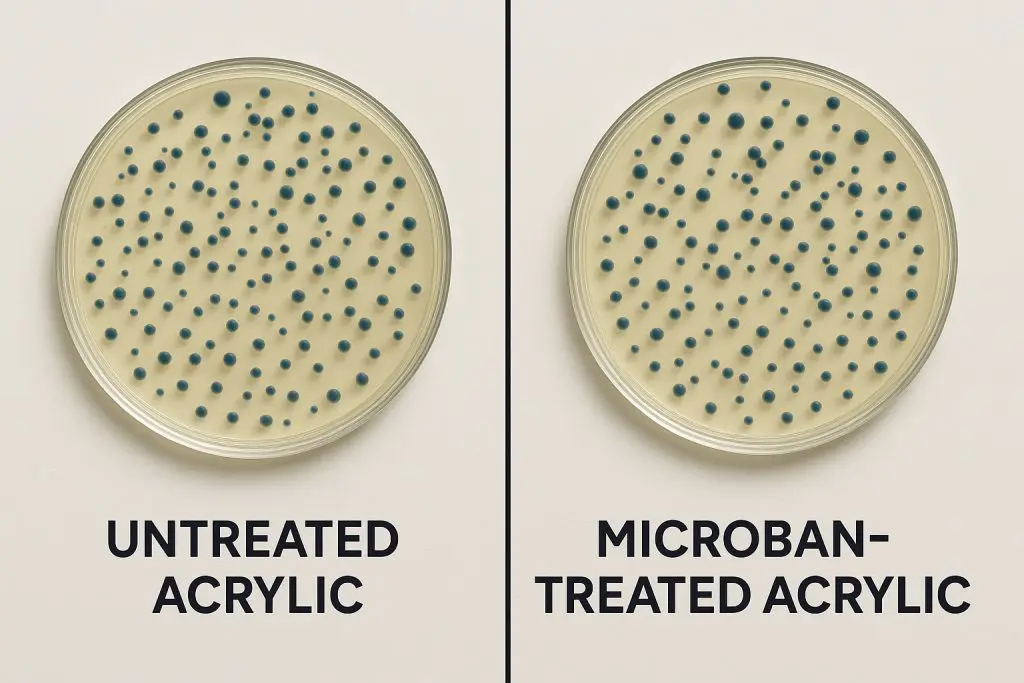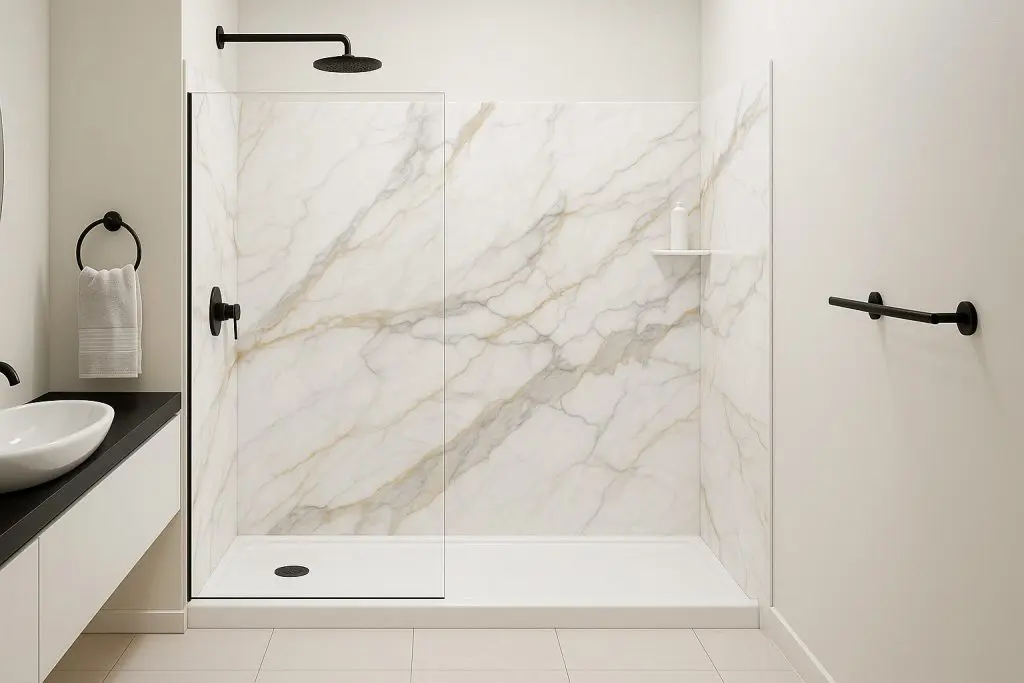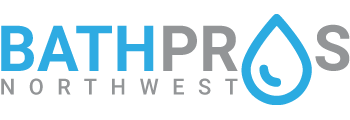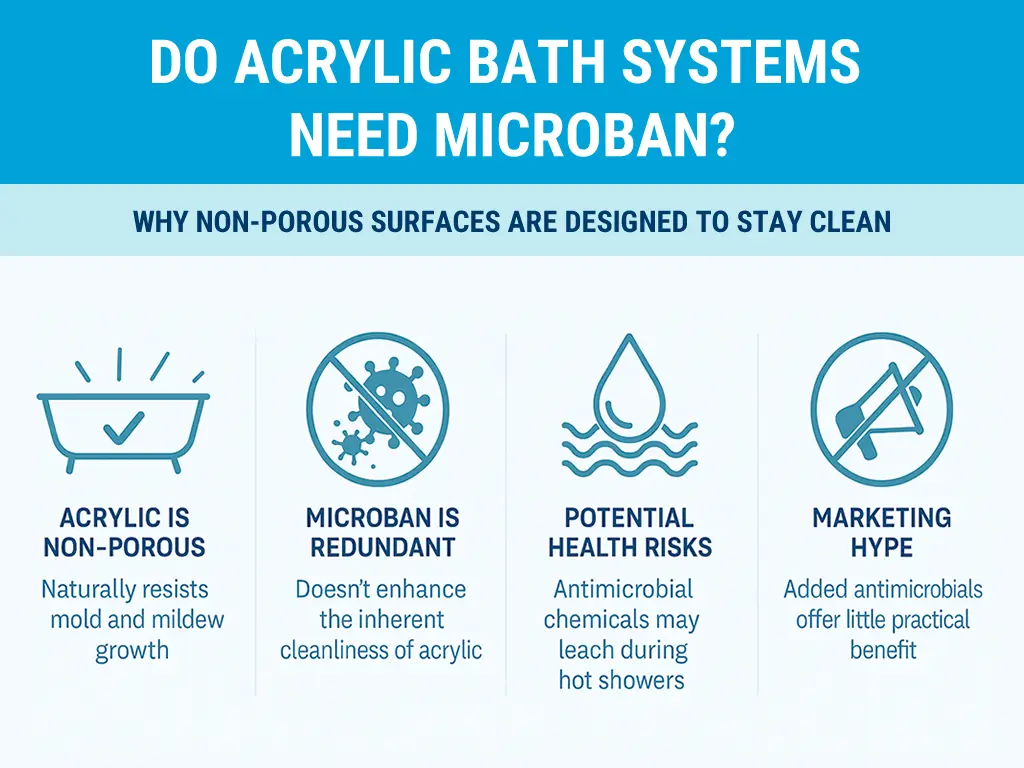When remodeling your bathroom, you want a clean, low-maintenance solution that lasts. Many customers ask us about antimicrobial options like Microban, often thinking it’s a must-have. But here’s what most people don’t know: a high-quality, non-porous acrylic shower system is already designed to resist mold, mildew, and bacteria—without the need for chemical additives.
What Is Non-Porous Acrylic?
Non-porous acrylic is a durable, smooth surface used in modern bathtubs and shower walls. Because it doesn’t absorb water, dirt, or bacteria, it stays cleaner longer. This makes it the ideal surface for bathrooms—especially when compared to tile or porous materials like stone.
With proper installation and simple cleaning, a non-porous acrylic shower system gives you a hygienic, easy-to-clean bathroom with no need for harsh chemicals.
What Is Microban, And Is It Safe?
Microban is a brand name for an antimicrobial additive. It’s infused into surfaces during manufacturing and designed to inhibit the growth of bacteria, mold, and mildew. It sounds appealing—but here’s the truth:
- According to the EPA’s PRN 2000-1, Microban is regulated as a pesticide under the “treated articles exemption.” The agency states: “EPA does not regard this exemption as including articles or substances bearing implied or explicit public health claims.“
- “Even Microban’s own documentation acknowledges that it does not replace cleaning and isn’t designed to protect human health.” – Green Building Supply, 2023
While Microban can reduce surface microbes, it doesn’t make a surface “clean” in a meaningful way for homeowners. It’s not a substitute for regular cleaning, and it doesn’t protect against viruses or prevent illness.
Why High Quality Acrylic Is a Better Option for Cleanliness
Here’s why high-quality non-porous acrylic surfaces are a better choice for most bathrooms:
- Naturally resists dirt and bacteria without chemicals
- Won’t stain or absorb moisture like grout or stone
- Cleans easily with just soap and water—no need for bleach or harsh sprays
- More environmentally friendly—no biocides or pesticides baked into your tubs or walls
- Safe for families and pets—no off-gassing or hidden toxins
What the Science Really Says About Antimicrobial Additives

Independent research shows that antimicrobial coatings in consumer products don’t improve health outcomes. A 2020 report from the Healthy Building Network and Perkins & Will found:
- No measurable benefit for people using products with antimicrobials
- Increased risk of chemical exposure and antimicrobial resistance
- A false sense of cleanliness leading to worse hygiene practices
Likewise, the EPA regulates Microban as a pesticide, not a health product. It’s not approved to kill viruses like COVID-19 and doesn’t replace the need to clean.
Comparison: Non-Porous Acrylic vs Microban-Enhanced Surfaces
| Feature | Non-Porous Acrylic | Microban-Enhanced Surfaces |
|---|---|---|
| Requires Harsh Chemicals? | ❌ No | ✅ Sometimes |
| Resists Mold and Mildew? | ✅ Yes | ✅ Yes (with additive) |
| Easy to Clean? | ✅ Very easy | ✅ Easy |
| Adds Chemicals or Pesticides? | ❌ None | ✅ Yes |
| EPA Health Protection Approval? | ❌ Not needed | ❌ Limited (not antiviral) |
Final Thoughts: A Cleaner, Simpler Solution
If your goal is a low-maintenance, healthy bathroom, a non-porous acrylic shower or bathtub gives you everything you need—without the gimmicks or added chemicals. Microban may sound helpful, but when you understand the science, it’s clear:
- Non-porous acrylic is already designed to stay clean
- Regular cleaning works better than passive coatings
- Fewer chemicals = safer, simpler remodeling
Ready to Upgrade?
Browse our bathroom remodeling gallery to see real examples of non-porous acrylic showers that look beautiful and stay clean for years.
Or contact us to schedule a free consultation.






